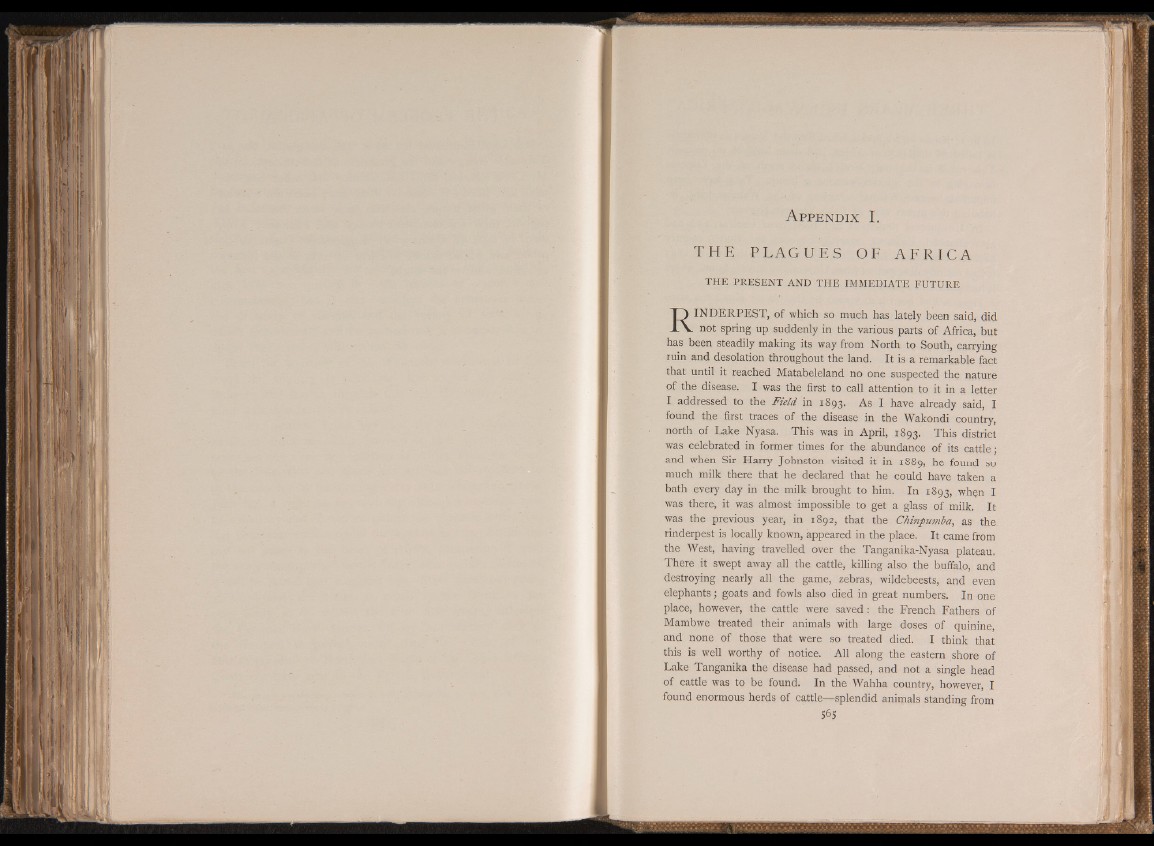
I 'r I I
I
in
A p p e n d i x I .
T H E P L A G U E S O F A F R I C A
THE PRESENT AND THE IMMEDIATE FUTURE
TO IN D ERP EST , of which so much has lately been said, did
X V not spring up suddenly in the various parts of Africa, but
has been steadily making its way from North to South, carrying
ruin and desolation throughout the land. It is a remarkable fact
that until it reached Matabeleland no one suspected the nature
of the disease. I was the first to call attention to it in a letter
I addressed to the F ield in 1893. As I have already said, I
found the first traces of the disease in the Wakondi country,
north of Lake Nyasa. This was in April, ^ 9 3 . This district
was celebrated in former times for the abundance of its cattle;
and when Sir Harry Johnston visited it in 1889, he found so
much milk there that he declared that he could have taken a
bath every day in the milk brought to him. In 1893, when I
was there, it was almost impossible to get a glass of milk. It
was the previous year, in 1892, that the Chinpumba, as the.
rinderpest is locally known, appeared in the place. It came from
the West, having travelled over the Tanganika-Nyasa plateau.
There it swept away all the cattle, killing also the buffalo, and
destroying nearly all the game, zebras, wildebeests, and even
elephants; goats and fowls also died in great numbers. In one
place, however, the cattle were saved: the French Fathers of
Mambwe treated their animals with large doses of quinine,
and none of those that were so treated died. I think that
this is well worthy of notice. All along the eastern shore of
Lake Tanganika the disease had passed, and not a single head
of cattle was to be found. In the Wahha country, however, I
found enormous herds of cattle—splendid animals standing from
565